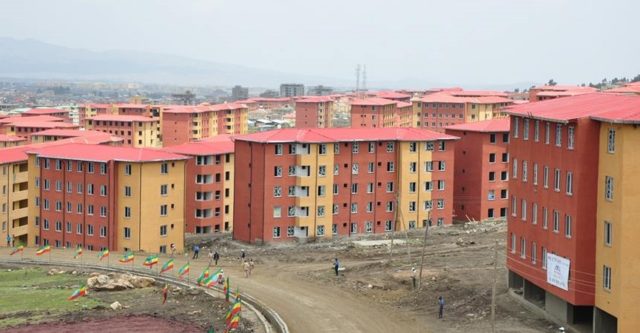Currently we are witnessing widespread demolition of existinghouses and residential areas and massive outcries in towns in the outskirts of Addis Abba. The action is taken on the ground of planning. By definition and in essence town planning means making life simpler and comfortable. The purpose of urban planning is to minimize the negative effects of migration-led urbanization in Ethiopia. Instead we saw how planning made people sad and cry. Few years ago, we also saw how farmlands were snatched up and transformed into new housing developments. Many farmers were compelled to sell their land to real estate developers at a cheaper price. The sprawl of the Addis Ababa city into farmlands has deprived many families their livelihoods. Should urban expansion (land shortage), development plan (house supply) and land use changes (legalizing ownership) cause pains and suffer. How can one address the challenges of migration-led urbanization in Ethiopia?
The pace of urbanization in Ethiopia is very rapid because of the internal migration process. Compared to other African countries, the growth rate is very fast (4,3%). Rapid growth means that many urban areas in the country grow without or with limited planning. The urban areas cannot withstand shocks to economy, social situation or infrastructure due to wave of rural-urban migration. Due to the growth rate, many urban areas are unable to cope up with planning and documentation of city and town growth. This leads to unwanted growth patterns where lack of water, sewage, electricity and many other amenities related to health, employment, education and wellbeing are scarce.
To solve the problems of poor planning, there is a need for town planners, surveyors, designers, civil and electrical engineers and technicians. According to my earlier study, the urban development department at a zonal level requires at least 64 professionals. As I see it, there is a need for national capacity-building program to enhance the skills and increase the capacities of local urban planning groups. Since urban planning is comprehensive in its coverage, it is by definition a governance activity dealing with the real needs and participation of the people. The role and intervention of the federal government should also be considered against the background of the process as a whole.
Not only that. The challenge of urbanization in Ethiopia is not only about speed (size multiplied by needs) and resilient urban planning; its regional distribution is unbalanced. Urbanization in Ethiopia is uneven and there is unbalanced growth of towns. The level of urbanization varies regionally, ranging from nearly 100 per cent in Addis Ababa to 8,7 per cent in SNNPR. By default the regional pattern of urbanization in Ethiopia is already unbalanced. The urban structure has uneven character in size and amorphous in functions and it is therefore important to have an industrial policy which brings about balanced regional growth in the country.
Urban planning and industrial policy alone cannot solve the challenges of migration-led urbanization in Ethiopia. There is a need for parallel transformation of the subsistence and non-farm based economy in the rural areas. The role of the federal government should be appraised not only in the making of the urban plan, but also in the process of local economic transformation. Urban planning is not separated from the many federal programs and financial assistance that influences local economic development.
The federal government has the financial strings in its hand. Own budget and revenues of urban centers and towns covers mainly their recurrent expenditures. Federal transfer (including foreign assistance) is the major source of urban development expenditures in the country. The federal government can have far more direct influence on urban planning than one might expect.
To further understand the root causes of urban expansion and planning problems, and to establish a corrective and preventive action plans see Urbanization in Ethiopia: Study on Growth, Patterns, Functions and Alternative Policy Strategy

























